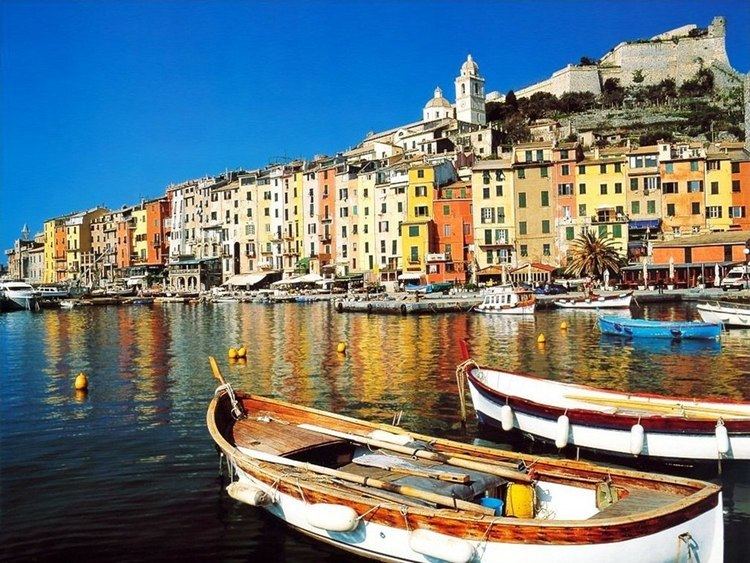Province / Metropolitan city La Spezia (SP) Demonym(s) Spezzini | Elevation 10 m (30 ft) Local time Friday 11:28 AM | |
 | ||
Frazioni Biassa, Campiglia, La Foce, Pitelli, San Venerio, Sarbia Weather 15°C, Wind NE at 19 km/h, 52% Humidity Points of interest Castle of Saint Giorgio, Technical Naval Museum, Museum Amedeo Lia, Museo Nazionale dei Trasp, Costantino Morin Walk | ||
Places to see in la spezia italy
La Spezia ([la ˈspɛttsja]; Spèza in the local dialect of Ligurian), at the head of the Gulf of La Spezia in the Liguria region of Northern Italy is the capital city of the province of La Spezia.
Contents
- Places to see in la spezia italy
- Map of La Spezia Province of La Spezia Italy
- History
- Churches
- Museums
- Others
- Climate
- People
- Economy
- Education
- International relations
- References
Map of La Spezia, Province of La Spezia, Italy
In terms of population, La Spezia is the second city in the Liguria region, preceded just by Genoa. Located midway between Genoa and Pisa on the Ligurian Sea, it is one of the main Italian military and commercial harbours and hosts the arsenal of the Italian Navy. It is important for its museums, for the Palio del Golfo, and for the railway and boat links with Cinque Terre.
History
The area of La Spezia has been settled since pre-historic times. In Roman times the most important centre was Luni, now located in the vicinity of Sarzana (city near La Spezia). Being the capital of the short-lived Niccolò Fieschi Signoria in the period between 1256 and 1273, inevitably linked with the Genoese vicissitudes until the fall of the Republic of Genoa, it grew and changed to develop following the lines of the Ligurian capital. In fact, this Ligurian influence still is visible in the urban layout as well as in the types of buildings and decorations. It can be seen by going along the carrugio, the narrow street dividing the Old Town into two, called Via del Prione taking its name from a pietrone or large stone, in local dialect in fact prione, from where public announcements were read.
Going up from the sea it is possible to see partly hidden, but evident traces of history: engraved stones, capitals, and portals in fourteenth century sandstone, double lancet windows vaguely reminiscent of the future renaissance style, mannerism and baroque pediments, and decorations similar to those adorning the portals of the palaces once belonging to the Doria family and the Princes of Massa.
La Spezia developed substantially after 1861 when the great naval arsenal there was commissioned by the Royal government. In September 1943 after the Italian capitulation to the Allies, it was the departure port for the Italian Navy when it was ordered to steam into British hands at Malta. The Germans arrived too late to stop the departure of the fleet, so they summarily executed the remaining Italian captains. During the war Italian troopships also left from La Spezia, including the Kaiser Franz Josef, a trans-Atlantic liner launched in Trieste in 1911 for the Austrian Lloyd company, and which Italy had confiscated in 1919. It was sunk in the harbour in La Spezia in 1944.
After the liberation, La Spezia became the point of departure for the survivors from the Nazi concentration camps. From the summer of 1945 to the spring of 1948 more than 23,000 Jewish displaced persons managed to leave Italy clandestinely for Mandate Palestine. After lengthy vicissitudes, the ships Fede, Fenice, and Komemiut managed to evacuate everyone from the Spezia gulf, to the point that on Israeli geographical maps, La Spezia is called Shàar Zion (Hebrew: Gateway to Zion).
Churches
Museums
Others
Climate
La Spezia has a borderline humid subtropical (Cfa) and Mediterranean climate (Csa), since only one month receives less than 40 millimetres (1.6 in). The city enjoys hot summers, chilly damp winters and very changeable and rainy autumns and springs. The average temperatures of the coldest month (January) are 4 °C (39 °F) minimum and 11 °C (52 °F) maximum. In the hottest month (July) they are 20 °C (68 °F) minimum and 29 °C (84 °F) maximum. Average annual precipitation is 1,314 millimetres (51.7 in), more than twice that in London. Snow is uncommon, with only one snowfall per year on average. Heavy snowfalls are exceptional events: only in 1985 a snowfall of more than 50 centimetres (20 in) has been recorded. Another big snowfall occurred during the night of 18 December 2009, with approximately 25 centimetres (9.8 in) of snow and temperatures as low as −7.4 °C (18.7 °F) in the following nights.
In winter nights, if the sky is clear, the temperatures may fall below zero, usually reaching about −2 to −4 °C (28 to 25 °F). Conversely, in summer, especially during sunny days, the temperature can easily exceed 30 °C (86 °F), and sometimes it reaches 35 °C (95 °F). Furthermore, the sensation of heat in summer is increased by the high humidity.
For the conformation of the territory the city is not exposed to the winds from the north, which lap western Liguria, but to those from the southeast. These winds bring heavy rain and they can reach 80 kilometres per hour (50 mph), causing in some cases the blocking of the port. The only northern wind reaching the city is the north-eastern Grecale, common during arctic air outbreaks, when the cold air flowing over the warmer Tyrrhenian sea triggers the formation of low pressures, draining the colder and heavier air trapped in the Po Valley, behind the Apennine Mountains.
People
Economy
Today, La Spezia is the chief Italian naval station and arsenal and it is the seat of a navigation school. It also is a commercial port, with shipyards and industries producing machinery, metal products, and refined petroleum.
Education
Since 2002 La Spezia is headquarters of a university named G. Marconi.
International relations
La Spezia is twinned with:
